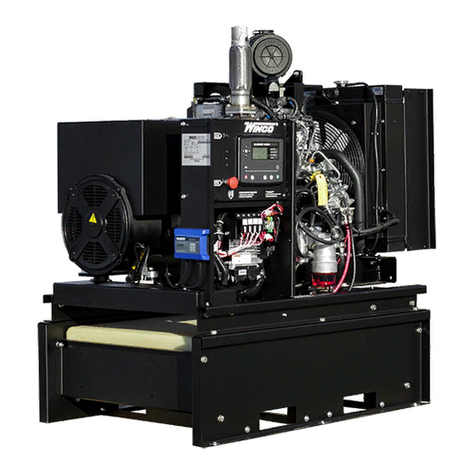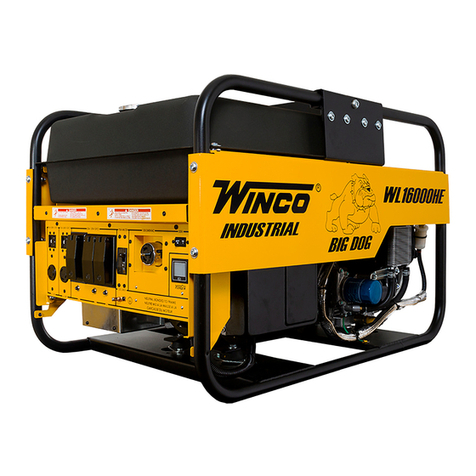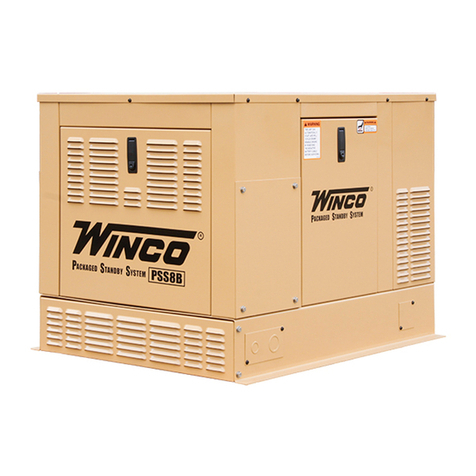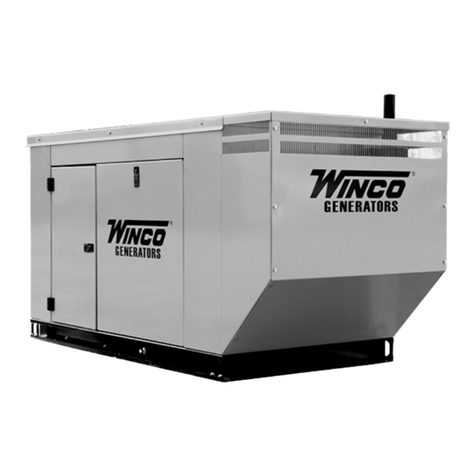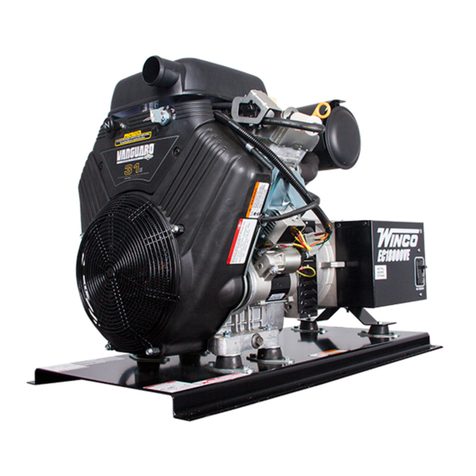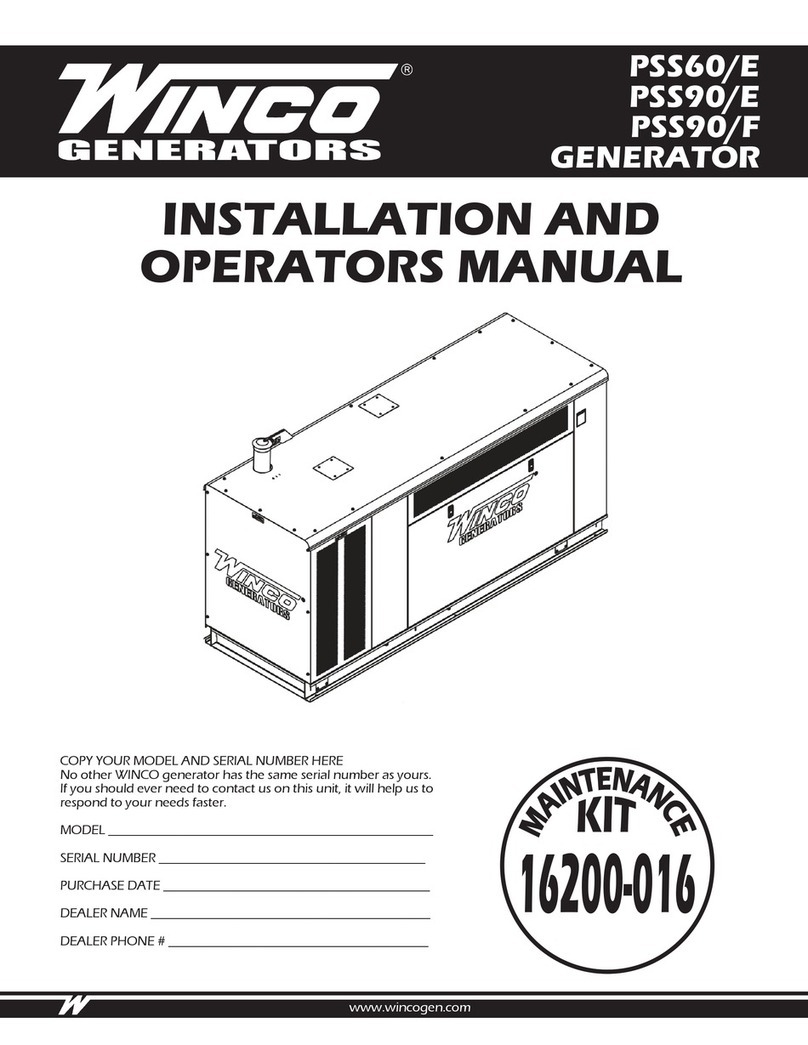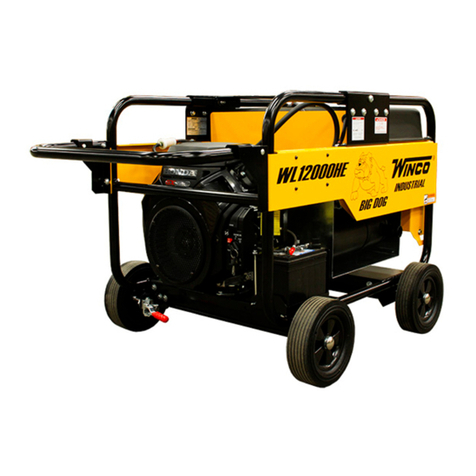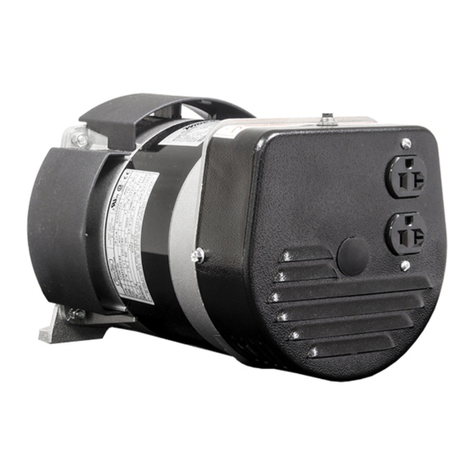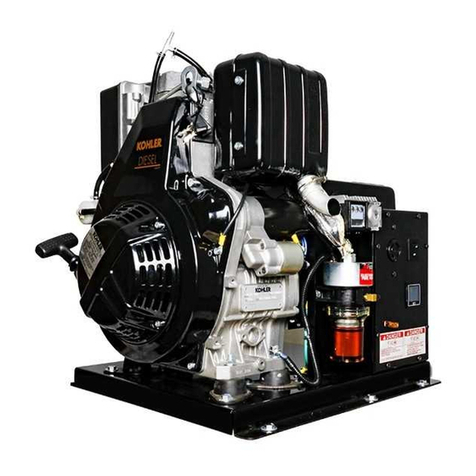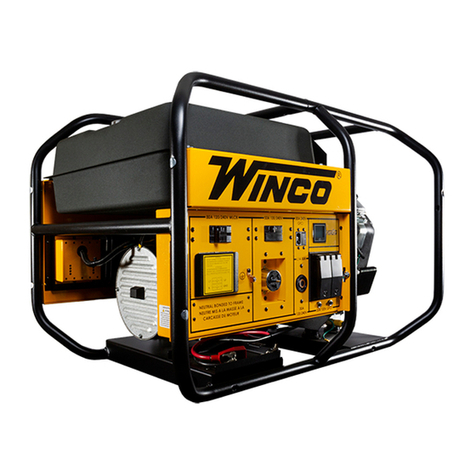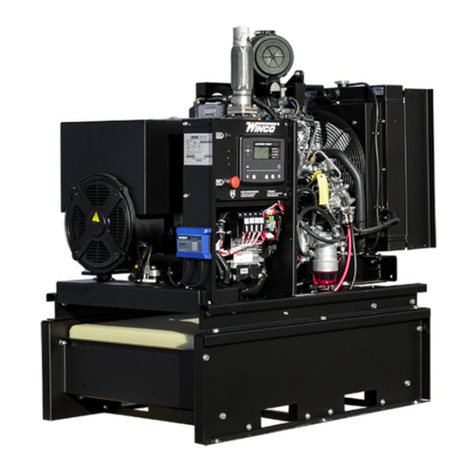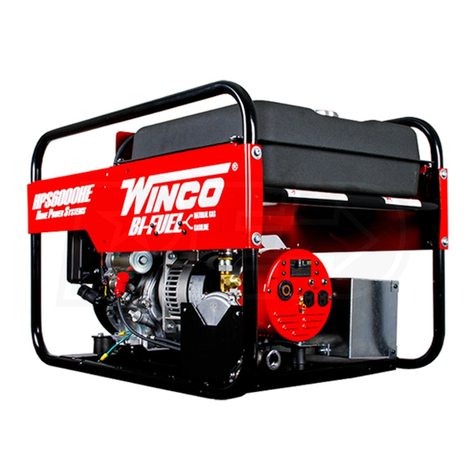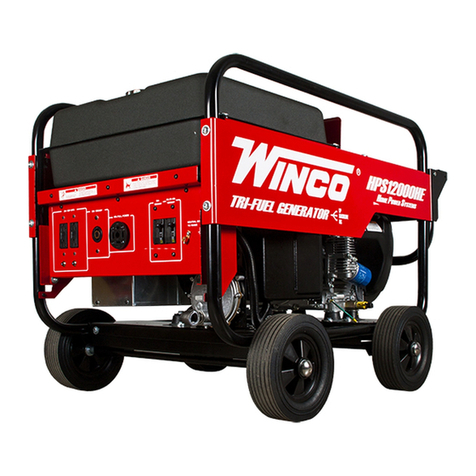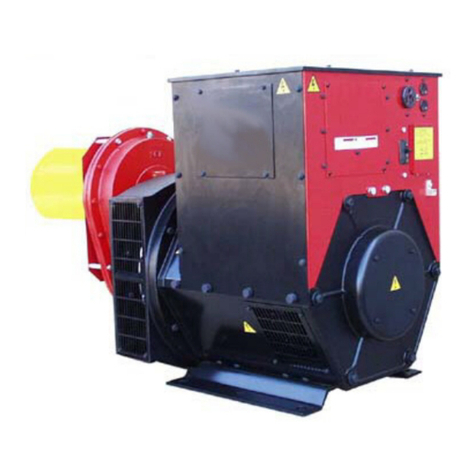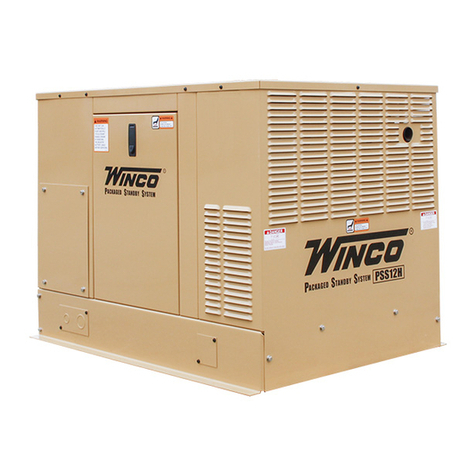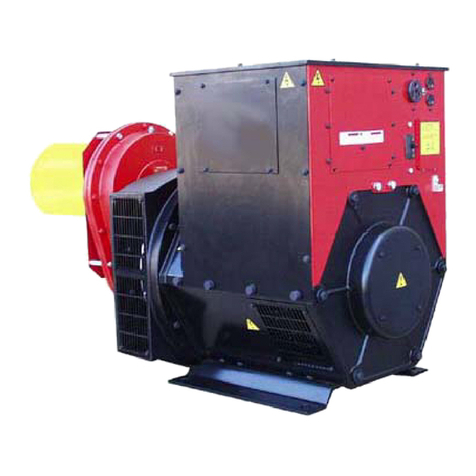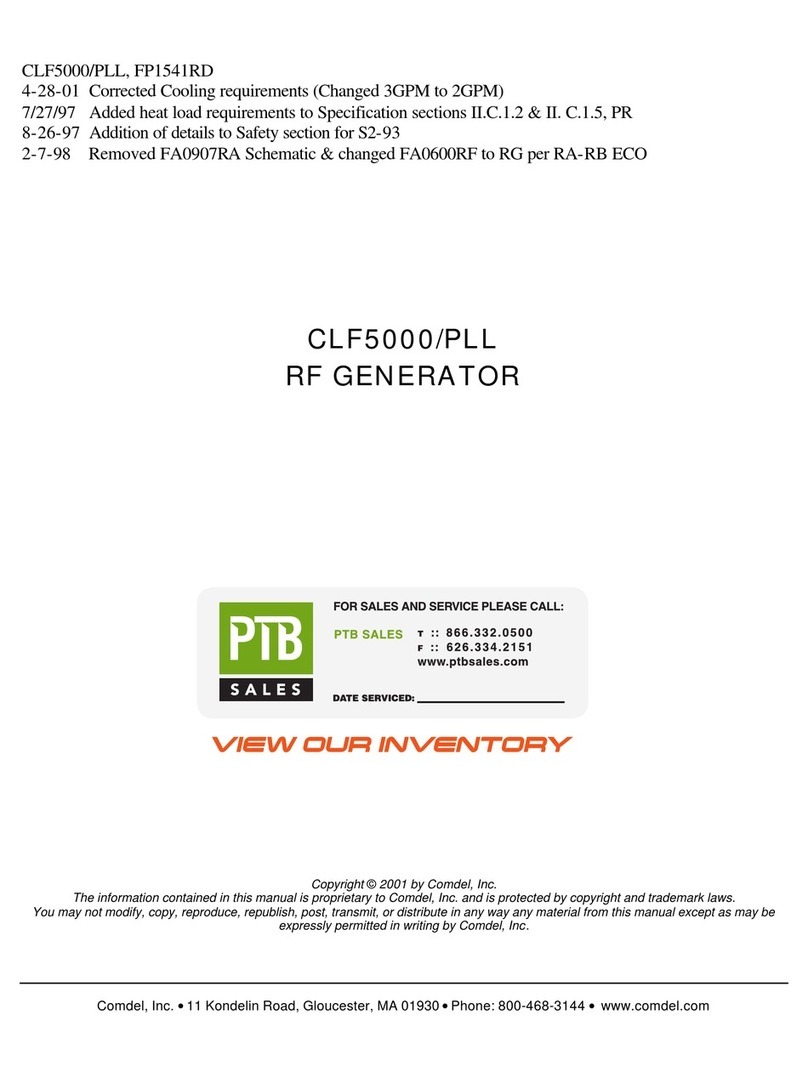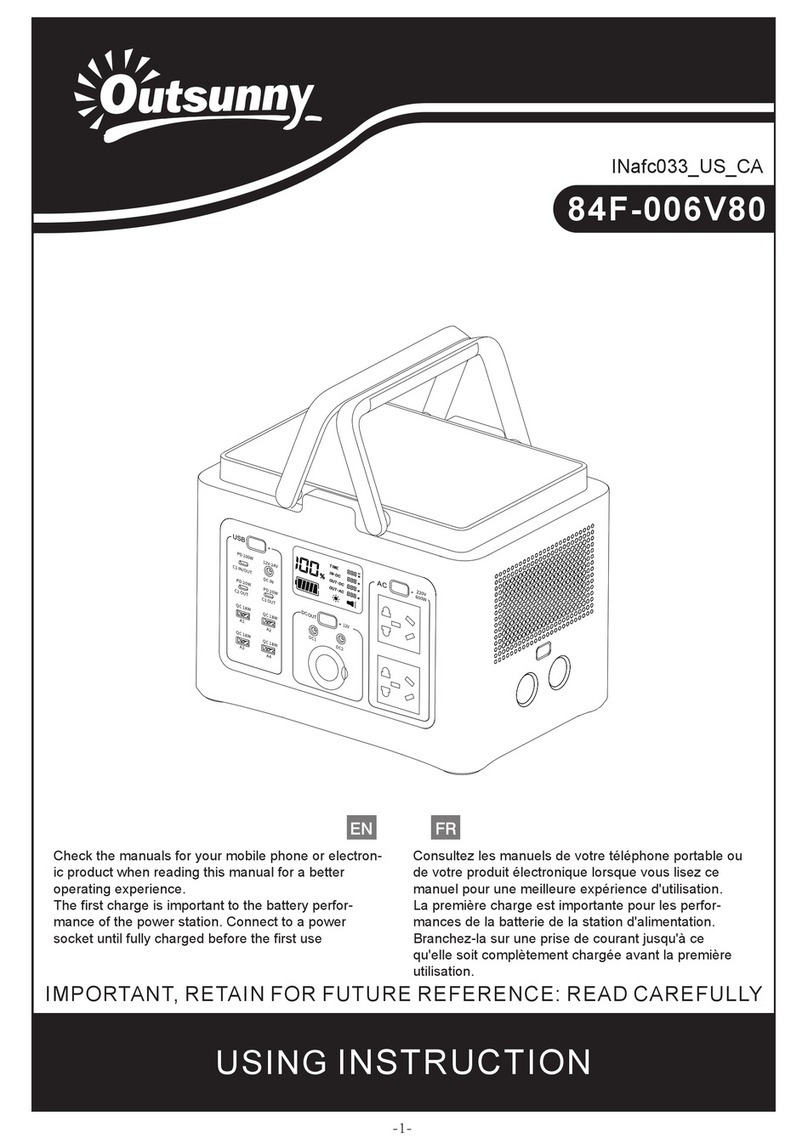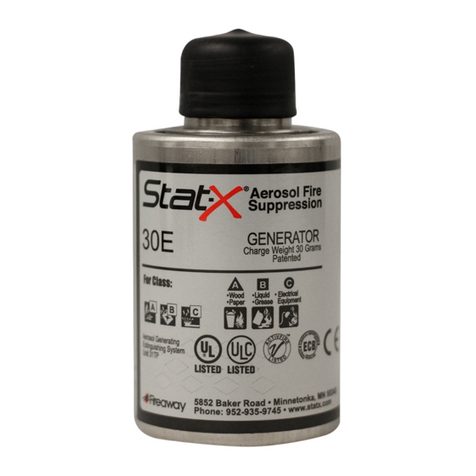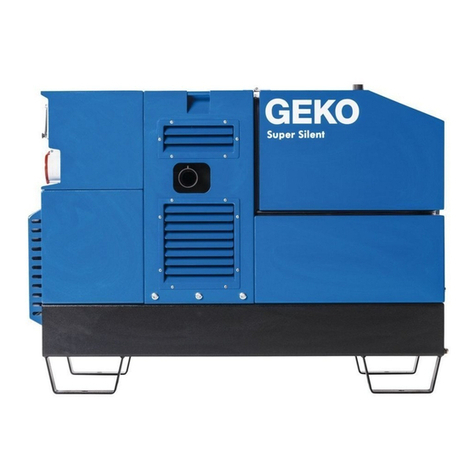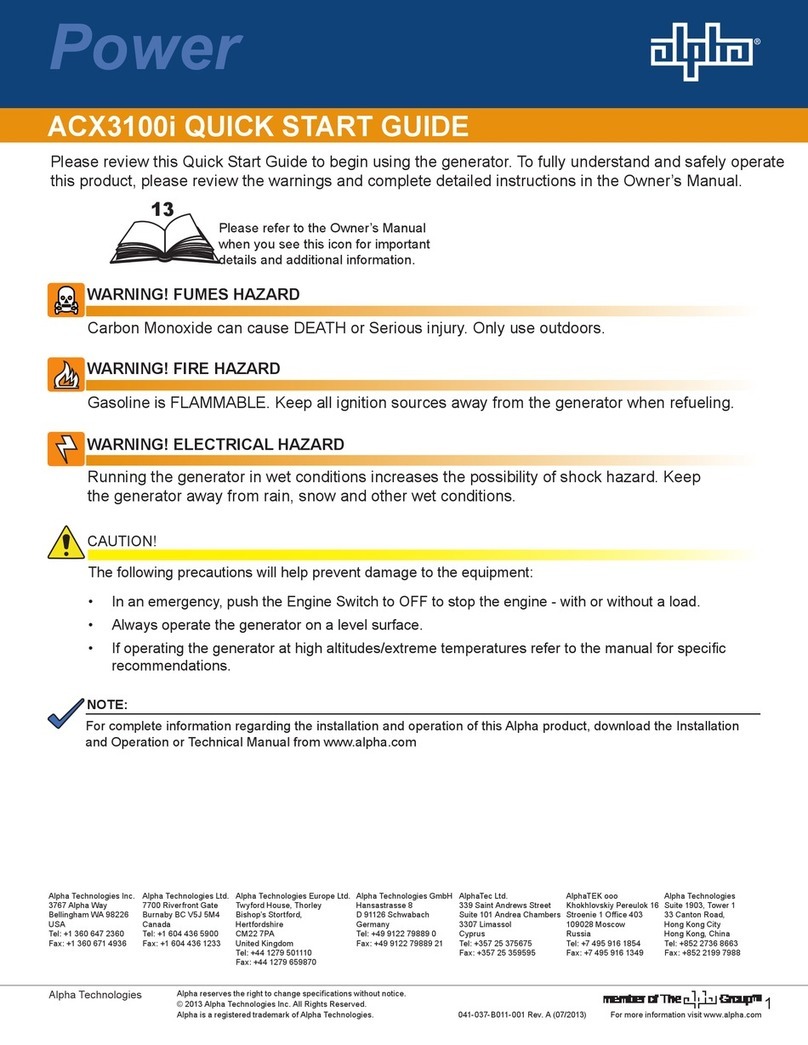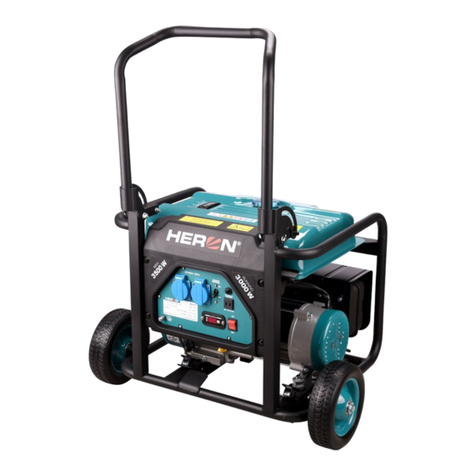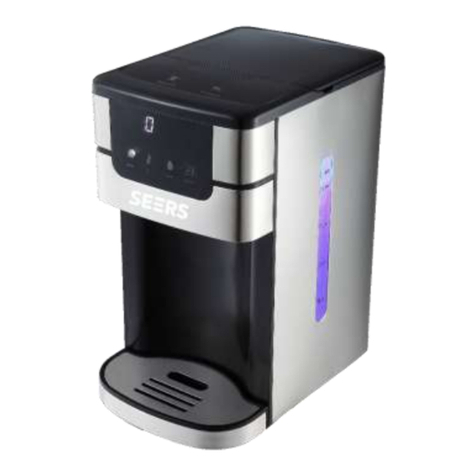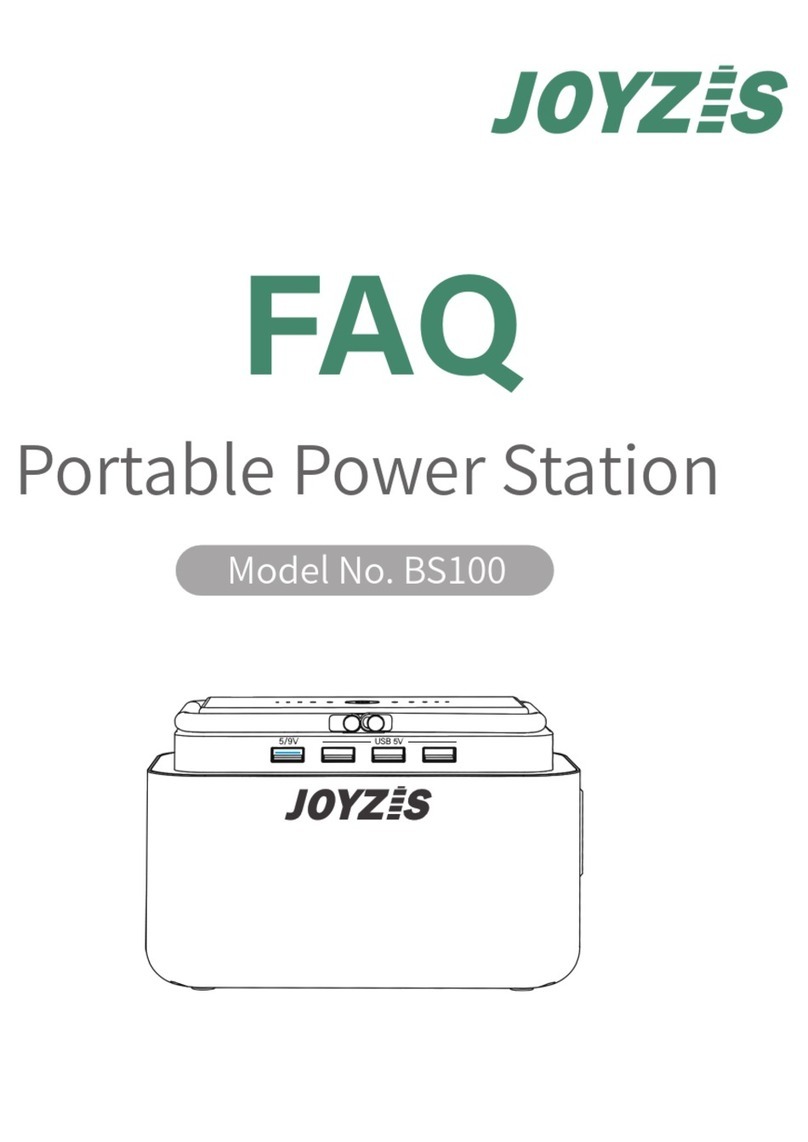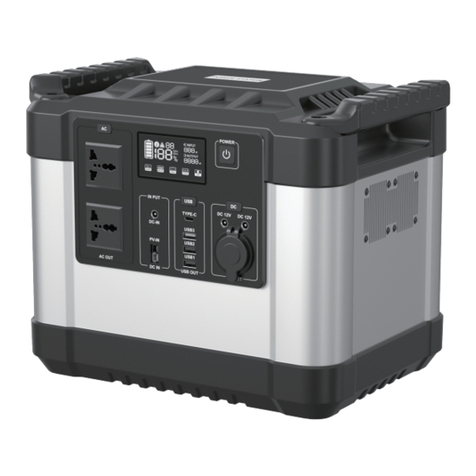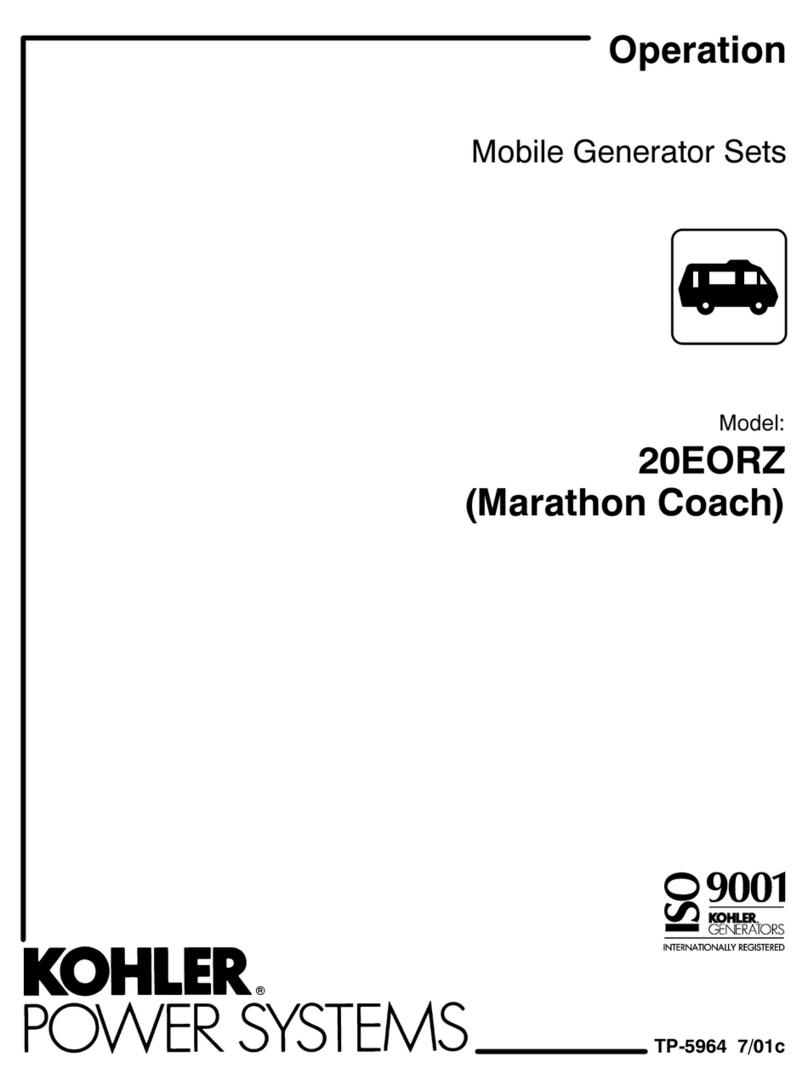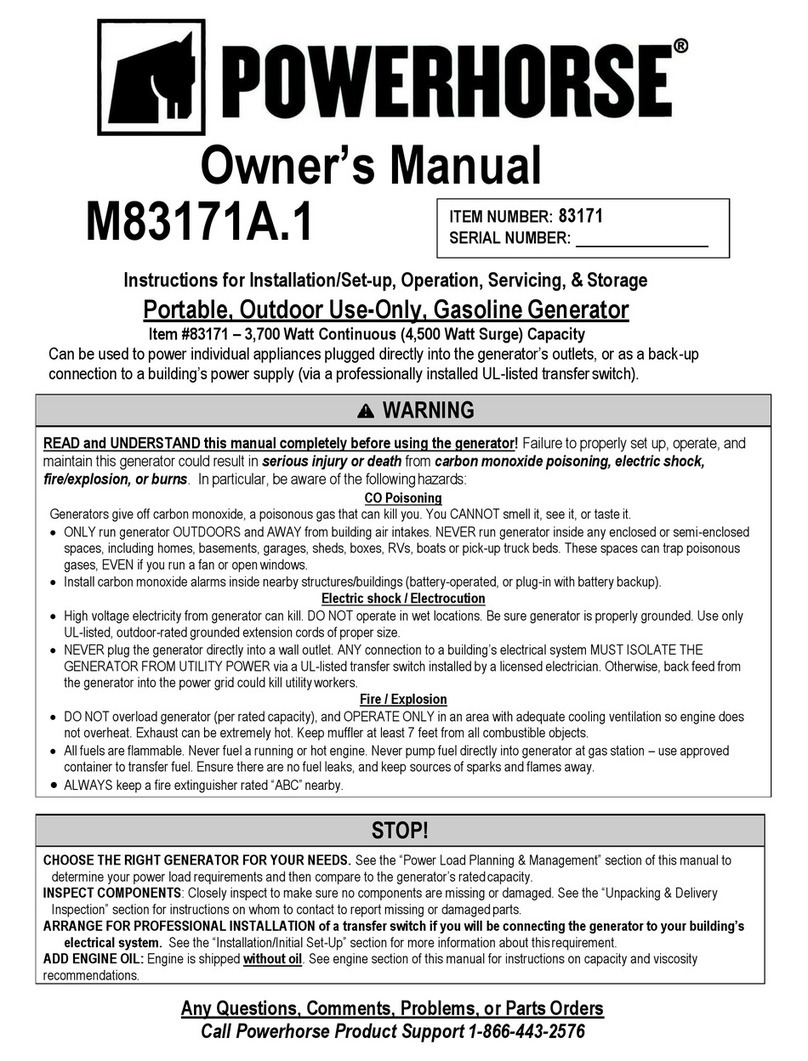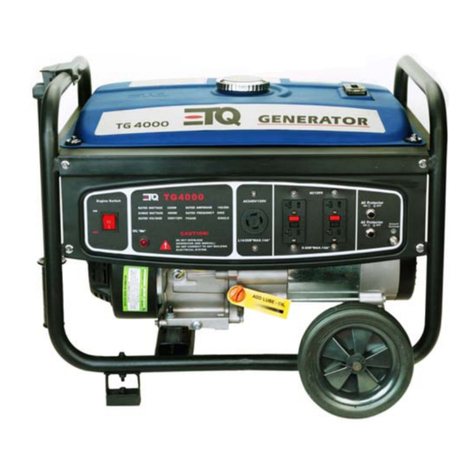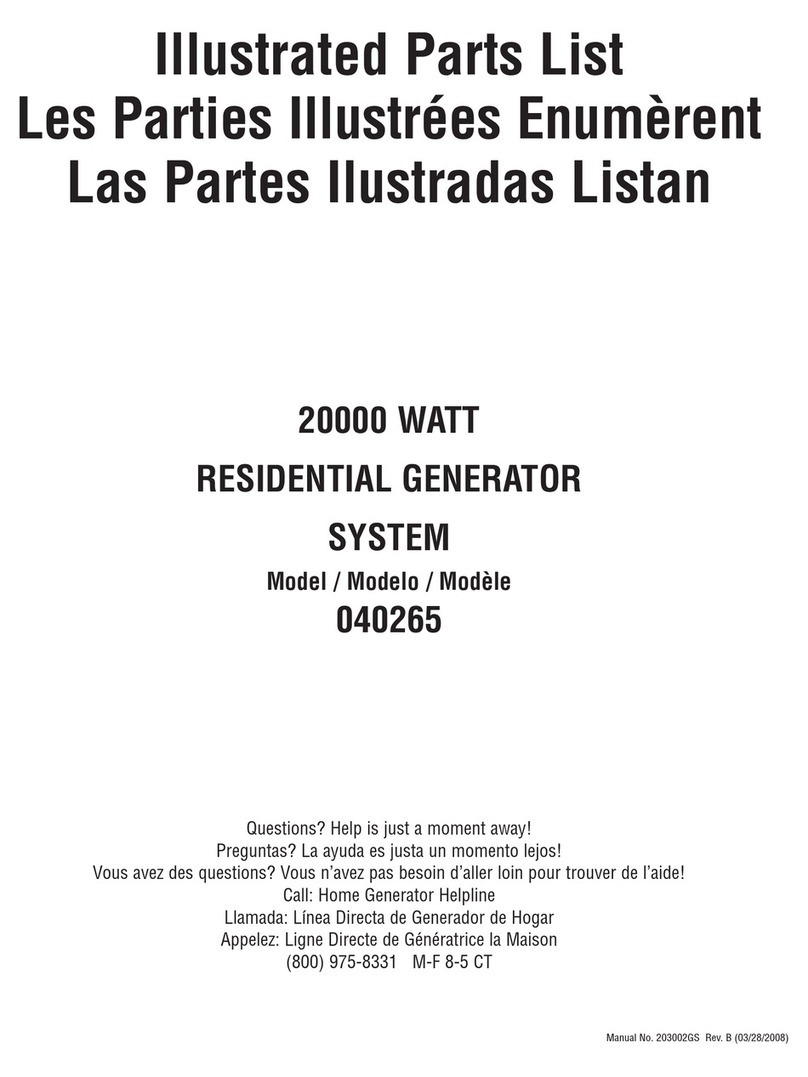
PAGE 1
7340-20 60706-186
SAFETY INFORMATION
This engine generator set has been designed and
manufactured to allow safe, reliable performance.
Poor maintenance, improper or careless use can result
in potential deadly hazards; from electrical shock,
exhaust gas asphyxiation, or fire. Please read all
safety instructions carefully before installation or use.
Keep these instructions handy for future reference.
Take special note and follow all warnings on the unit
labels and in the manuals.
ANSI SAFETY DEFINITIONS
************************************************************
DANGER:
DANGER indicates an imminently hazardous situation
which, if not avoided, will result in death or serious
injury. This signal word is to be limited to the most
extreme situations.
***********************************************************
************************************************************
WARNING:
WARNING indicates a potentially hazardous situation
which, if not avoided, could result in death or serious
injury.
***********************************************************
***********************************************************
CAUTION:
CAUTION indicates a potentially hazardous situation
which, if not avoided, may result in minor or moderate
injury. It may also be used to alert against unsafe
practices.
************************************************************
NOTE:
CAUTION is also used on the unit labels and in this
manual to indicate a situation that could result in
serious damage or destruction of the equipment and
possible personal injury.
1. ELECTRIC SHOCK - The output voltage present in
this equipment can cause a fatal electric shock. This
equipment must be operated by a responsible person.
a. Do not allow anyone to operate the generator
without proper instruction.
b. Guard against electric shock.
c. Avoid contact with live terminals or receptacles.
d. Use extreme care if operating this unit in rain or
snow.
e. Use only three-prong grounded receptacles and
extension cords.
f. Be sure the unit is properly grounded to an
external ground rod driven into the earth.
2. FIRE HAZARD - Natural gas and L.P. present a
hazard of possible explosion and/or fire.
a. Do not refuel when the engine is running or hot.
Allow the engine to cool at least two minutes
before refueling.
b. Keep fuel containers out of reach of children.
c. Do not smoke or use open flame near the
generator set or fuel tank.
d. Keep a fire extinguisher nearby and know its
proper use. Fire extinguishers rated ABC by
NFPA are appropriate.
e. Store fuel only in an approved container, and only
in a well-ventilated area.
f. Follow local codes for closeness to combustible
material.
3. DEADLY EXHAUST GAS - Exhaust fumes from any
gasoline engine contain carbon monoxide, an invisible,
odorless and deadly gas that must be mixed with fresh
air.
a. Operate only in well ventilated areas.
b. Never operate indoors.
c. Never operate the unit in such a way as to allow
exhaust gases to seep back into closed rooms
(i.e. through windows, walls or floors).
4. NOISE HAZARD - Excessive noise is not only tiring,
but continual exposure can lead to loss of hearing.
a. Use hearing protection equipment when working
around this equipment for long periods of time.
b. Keep your neighbors in mind when permanently
installing this equipment.
5. CLEANLINESS - Keep the generator and surrounding
area clean.
a. Remove all grease, ice, snow or materials that
create slippery conditions around the unit.
b. Remove any rags or other material that could
create potential fire hazards.
c. Carefully clean up any gas or oil spills before
starting the unit.
d. Never allow leaves or other flammable material
to build up around the engine intake or exhaust
area.
6. SERVICING EQUIPMENT - All service, including the
installation or replacement of service parts, should be
performed only by a qualified technician.
a. Use only factory approved repair parts.
b. Do not work on this equipment when fatigued.
c. Never remove the protective guards, cover, or
receptacle panels while the engine is running.
d. Use extreme caution when working on electrical
components. High output voltages from this
equipment can cause serious injury or death.
e. Always avoid hot mufflers, exhaust manifolds,
and engine parts. They all can cause severe
burns instantly.
f. Installing a generator set is not a “do-it-yourself”
project. Consult a qualified, licensed electrician
or contractor. The installation must comply
with all national, state, and local codes.
